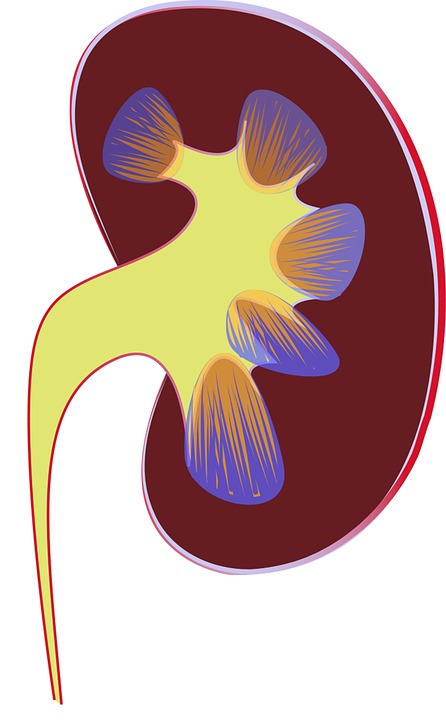An Explanation of What is an Economy
A simple explanation of what is an economy is a system of interdependent individuals and groups. This system includes production, trade, and consumption. In an economy, everyone has a stake in the success of the system. The economy provides opportunities for people to make a living. Its activities are crucial to the survival of the human civilization.
Economic system
In a free market economy, the government does not interfere with the flow of goods and services, and prices are set by demand and supply. This system fosters competition between buyers and sellers, with both competing to provide the best products at the lowest prices. Resources and capital are privately owned, and production decisions are based on the need to make a profit.
An economic system is a collection of economic practices that govern the production and distribution of a nation’s resources. Economic systems are often classified by the types of participants they involve and the ways that those participants regulate these processes. Economic systems differ widely, with the three main types being market-based, command-based, and tradition-based.
A mixed economic system incorporates elements of both a market economy and a command economy. Today, most world economies are becoming mixed economies. This type of economy is an excellent choice for countries that support globalization. It encourages the growth of the private sector and allows citizens to enjoy the benefits of an open economy. Prices are determined largely by the laws of supply and demand, though the government can impose price ceilings to protect consumers.
A capitalist economic system is one where private firms run the economy. This type of economy requires a government to enforce property rights. The profits of businesses go to their owners, and they are subject to taxes. Capitalist economies are sometimes referred to as free market, laissez-faire, and market economies.
Economic transactions
Economic transactions are the fundamental building blocks of a market economy. We all engage in a wide range of these transactions on a daily basis. If we understand these transactions, we can better understand how the economy works. For instance, there is a market for wheat, a market for cars, and a market for software.
These economic transactions involve the transfer of ownership of one thing to another. These transactions take place in various sectors of the economy, and include both visible and invisible items. Those that can be physically seen and touched include physical goods such as cars and houses. Other transactions involving tangible assets include transfer of ownership of fixed assets. These items generate income for the owners. Moreover, they are subject to taxes and other costs.
In a market economy, the most common kind of transaction involves exchange of cash and assets denominated in units of currency. However, there are also non-monetary transactions that involve more than one institutional unit. These transactions include distributive transactions and remuneration in kind. Then there are bartering transactions, such as the exchange of non-produced non-financial assets.
An economy’s balance of payments is a statistical statement of its transactions with other countries. It includes transactions between residents and non-residents. A resident is a person or company registered in a country for at least a year.
Economic performance
Economic performance is generally measured in terms of the achievement of specific economic goals, either long or short-term. Various economic indicators are used to gauge economic performance and help policy makers determine whether their policies are working. These indicators can be used to measure a country’s growth and income levels, as well as unemployment rates and GDP per capita.
A study by Acemoglu and Robinson (2013) supports the view that economic performance is a function of structural change. The structure of an economy affects its economic performance through the distribution of income, which is influenced by political institutions and the distribution of property rights. Moreover, since the distribution of property rights is endogenous, external shocks can cause structural changes and disrupt the balance of property rights.
OECD’s High-Level Expert Group on Economic Performance and Social Progress (HLEG) was formed in 2013 to provide guidance on interpreting the recommendations of the Stiglitz-Sen-Fitoussi Commission. The HLEG’s work has been instrumental in guiding OECD’s work in measuring well-being across the world.
The growth of wages and profits has numerous positive externalities. For example, higher wages and profits raise the standard of living in a country. However, the wages of London bus drivers and African bus drivers are not equal in both countries. The difference in wage levels is explained by differences in the production structures. Production structure determines a country’s ability to innovate and diversify its economy. Furthermore, it determines the length of job ladders and structural change.
Economic theory
Economic theory explains the relationship between supply and demand. In general, the more expensive a good is, the fewer people will buy it. But when the price of a commodity falls, more consumers will buy it. This is called the income effect. A rise in income increases the purchasing power of a consumer and shifts the demand curve outward.
Economists test their economic theories empirically. They build models that link variables like consumption and income to measure economic behavior. Using this model, they predict that a change in one variable will lead to a similar change in the other. However, they can’t prove that this is the case, so they can’t prove that the relationship is correct.
Another important aspect of economic theory is the role of government policies. These policies can help a country gain a competitive advantage over other nations. Many industries have constant costs that decrease as production increases. Therefore, this theory teaches that government policies and economic policies can help a country create a competitive advantage in a given industry.
The theory of trade and comparative advantage can be used to explain how countries trade and develop. This theory of trade and investment encourages the movement of capital and labor across borders. The theory also shows that an economy will export more goods and export more products if it has plenty of factors of production.
Economic institutions
Economic institutions play a key role in the functioning of any economy. They determine property rights, facilitate transactions, and organize economic participants. Often, economic institutions are constitutional in nature and contribute to economic development. They are an important aspect of a country’s society, but they are not sufficient on their own. They often require reform in order to be effective.
The economic structure of a country determines the performance of institutions. Many less developed countries have inclusive institutions, but only selectively enforce them. In many cases, the reason for this is that the institutions’ costs exceed the returns they produce. Such a scenario limits economic development in many developing countries. The best way to ensure that institutions are effective is to examine the economic structure of a country and determine what institutions work best in that context.
Economic institutions are both public and private and play a pivotal role in society. They help the economy by providing services and products to citizens. Examples include national economic bureaus, tax collection agencies, and university departments devoted to economic research. These institutions are considered to be the foundations of a society and integral to its economic system.
Economic institutions have the potential to improve the efficiency of monetary and fiscal policies. They also contribute to the resilience of financial systems. By strengthening economic institutions, governments can better address global challenges like climate change, tackling inequality, and leveraging the power of digitalization.
Economics as a field of study
Economics as a field of study is a multidisciplinary subject that includes a variety of disciplines. A number of prominent economists contributed to economic thought throughout history. In 1776, Adam Smith published The Wealth of Nations, considered to be the birth of modern economics as a distinct discipline. This work focused on the three main factors that contribute to wealth, including land, labour, and capital. This method helped to refute the physiocratic concept that labor is the only factor that contributes to wealth.
The study of economics is important in everyday life. It can help you answer questions about how to invest, how to choose an education, and whether to pursue an alternative career. In addition to these practical applications, economics can also inform public policies. It helps government officials make decisions about how to allocate their limited resources and budgets.
Economics is a branch of the social sciences that looks at the efficient management of resources and economic growth. It is also important to consider the role of social, political, and legal factors, as well as geography and history. Typically, economics is split into two major veins: microeconomics, which is concerned with the management of individual households and businesses, and macroeconomics, which deals with the whole economy.
A major in economics provides a comprehensive foundation for public policy analysis. It equips students with the analytical, problem-solving, and critical-thinking skills they need to be effective policy makers. Economics graduates are highly sought-after by employers in the public and private sectors. Those with a degree in economics are typically better-paid than those with other majors.



